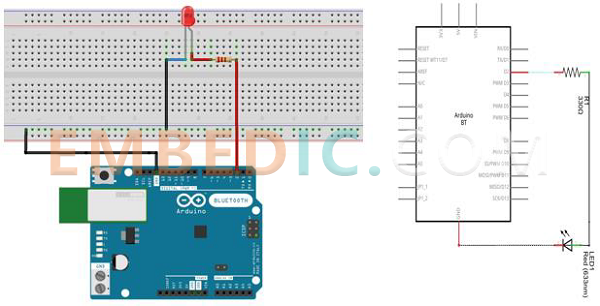Arduino embedded systems have revolutionized the world of electronics and programming, empowering enthusiasts and professionals alike to create interactive and intelligent projects. An Arduino is a microcontroller-based development board that provides a user-friendly platform for building a wide range of electronic systems and prototypes.
From simple sensor-based projects to complex home automation systems, Arduino embedded systems offer a versatile and accessible way to explore the exciting world of electronics and programming. In this article, we will delve into the the definition of arduino and embedded system and the difference between arduino and embedded system, shedding light on their significance in modern technology and the endless possibilities they offer for creative projects and practical applications.
Arduino is an open-source electronics platform that consists of both hardware and software components. It was created to make it easy for people, especially those without a background in electronics or programming, to create interactive projects and prototypes.
The Arduino hardware typically consists of a microcontroller board with various input and output pins, which can be used to connect sensors, actuators, and other electronic components. These boards come in different variations, offering different capabilities and form factors.
The Arduino software, also known as the Integrated Development Environment (IDE), is a user-friendly interface that allows you to write, compile, and upload code to the Arduino board. The programming language used is a simplified version of C/C++, making it accessible for beginners.
With Arduino, you can build a wide range of projects, from simple blinking LED lights and temperature sensors to more complex projects like home automation systems, robotics, and IoT (Internet of Things) devices.
Here's a simple Arduino project you can try:
Project: Blinking LED

Components needed:
An embedded system is a specialized computing system that is designed to perform dedicated functions or tasks within a larger system. Unlike general-purpose computers, embedded systems are not intended for user interaction or running a wide range of applications. Instead, they are optimized for specific functions or applications and are typically hidden from the user's view.

The structure of an embedded system can be divided into three main components: hardware, software, and the interface between them.
Hardware:
Software:
Interface:
Yes, Arduino is an embedded system. Arduino is a popular open-source electronics platform designed to simplify the creation of interactive projects and prototypes for hobbyists, students, and beginners in the field of electronics and programming.
The core of an Arduino board is a microcontroller (usually an Atmel AVR-based microcontroller), which is a key component of embedded systems. The microcontroller on an Arduino board serves as the brain of the system, handling inputs from sensors, performing calculations, and controlling outputs to actuators or other external devices.
Arduino boards are designed to be embedded into various projects, making them an integral part of the larger system they are being used in. They can be programmed to execute specific tasks, interact with sensors and actuators, and communicate with other devices or systems. This tight integration of hardware and software is a hallmark of embedded systems.
Arduino and Embedded Systems have some similarities, as Arduino itself is an example of an embedded system. However, there are also several key differences between the two:
|
Feature |
Arduino |
Embedded Systems |
|
Purpose and Flexibility |
Geared towards education and rapid prototyping |
Designed for specific tasks and applications |
|
Complexity and Resources |
Suitable for moderately complex projects, limited resources |
Varies in complexity, can handle a wide range of tasks |
|
Development Environment |
User-friendly Arduino IDE |
Professional development tools and standard programming languages (e.g., C/C++) |
|
Community and Support |
Large and active Arduino community |
Various embedded systems communities |
|
Cost |
Relatively affordable and accessible |
Cost varies based on complexity and performance |
In conclusion, Arduino embedded systems have democratized the world of electronics, making it accessible to people with diverse backgrounds and skill levels. The flexibility, ease of use, and open-source nature of Arduino have contributed to its widespread adoption in various industries, including education, research, and product development. As technology continues to advance, Arduino embedded systems will likely play an increasingly vital role in shaping the future of innovation and automation.
Whether you are a beginner in electronics, an educator, or a seasoned engineer, exploring the potential of Arduino embedded systems opens up a world of creativity and problem-solving. Embrace the power of Arduino, experiment with its vast array of libraries and shields, and embark on a journey of discovery and innovation in the realm of embedded systems. From fun and educational projects to real-world applications, Arduino offers endless opportunities to bring your ideas to life and revolutionize the way we interact with the world around us.
Manufacturer: Microchip
IC MCU 8BIT 128KB FLASH 40DIP
Product Categories: 8bit MCU
Lifecycle:
RoHS:
Manufacturer: Texas Instruments
IC DGTL MEDIA PROCESSR 1031FCBGA
Product Categories: DSP
Lifecycle:
RoHS:
Manufacturer: Silicon Labs
IC MCU 8BIT 8KB FLASH 10DFN
Product Categories: 8bit MCU
Lifecycle:
RoHS:
Manufacturer: Texas Instruments
IC DSP FIX/FLOAT POINT 841FCBGA
Product Categories: DSP
Lifecycle:
RoHS:
Looking forward to your comment
Comment